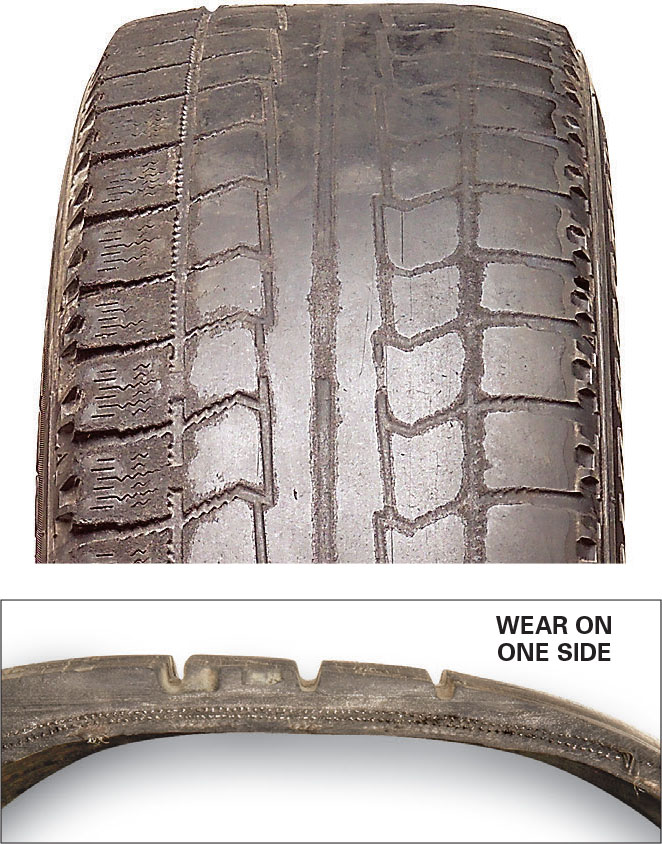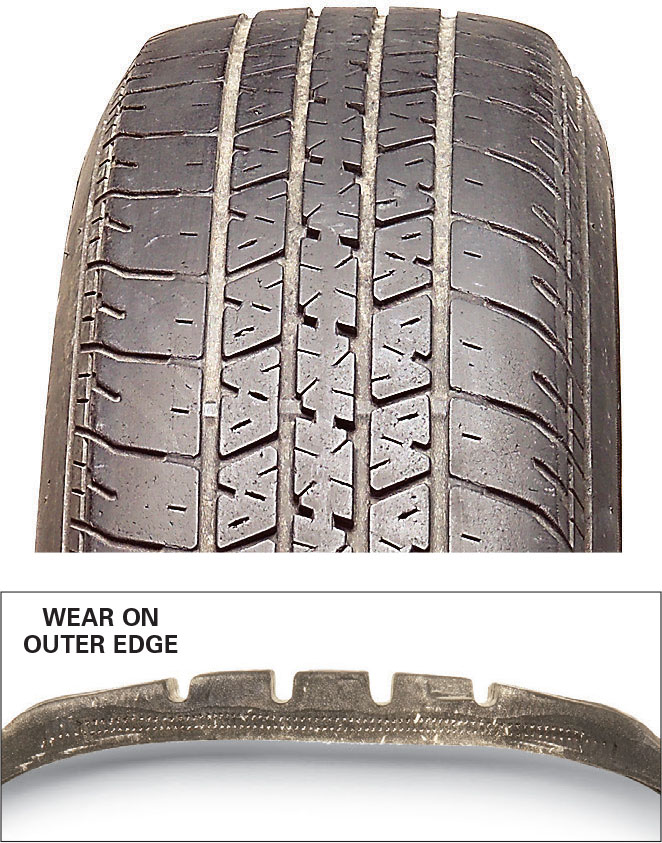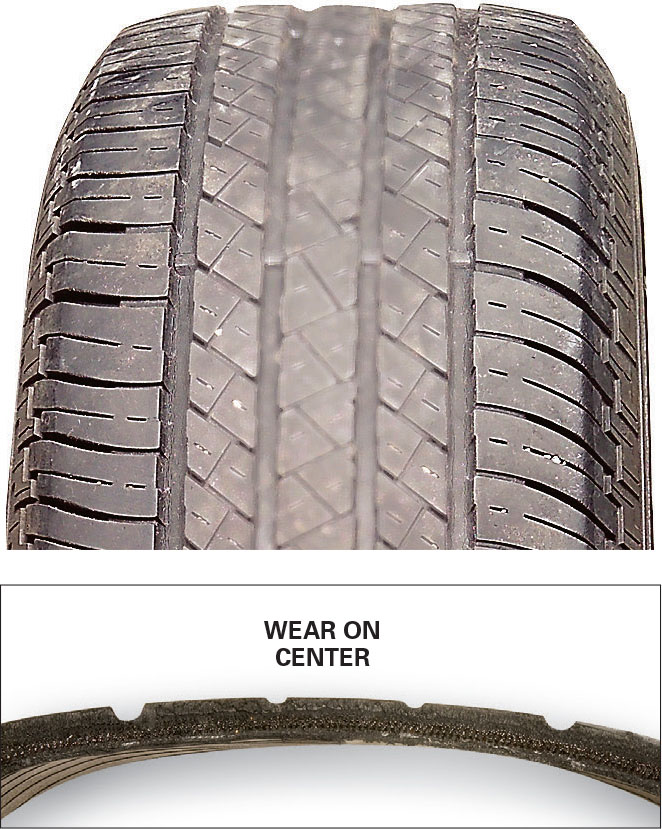Diagnosing tire problems
Bad alignment
→ Vehicle is out of alignment, and its tires are rolling on their edges. The car most likely pulled to the side, but the driver ignored it. Ignoring the problem was costly. The tires wore out faster, and the vehicle still needed alignment. If your tread is worn on one side, get your vehicle aligned ASAP.

Underinflated tires
→ Underinflation is the most common tire wear problem. The center tread puckers toward the rim because there’s not enough pressure to keep it in contact with the road. So the full weight of the car rides on the edges. In addition to premature wear, low tire pressure causes excessive heat and possible blowouts. The owner of these tires never bothered to keep the tires inflated.

→ Although overinflated tires may give you slightly higher gas mileage, they can cause much more serious problems than they solve. Overinflated tires carry the entire weight of the car on the middle portion of the tread. Only the center tread was in contact with the road. That’s why the center tread wore more than the edges.
On wet roads, the center tread can’t pump the water out to the sides (think of a squeegee with a bulge in the center). So they’re more prone to hydroplaning (like water skiing) and also more likely to skid in a stop or in a turn, and blow out on hard bumps. The bottom line: Overinflation is costly and dangerous. Always follow the inflation pressures shown on the car, not the tires.

Front-wheel-drive cars
→ The front tires on front-wheel-drive cars carry a heavier load and perform more work (steering and braking). So they wear faster than the rears. Rotating tires every 6,000 miles spreads the wear across all four tires. Skip it and you’ll find yourself with two bald tires in the front and two halfway good tires in the rear. You’ll lose about 25 percent of the tire set’s life.